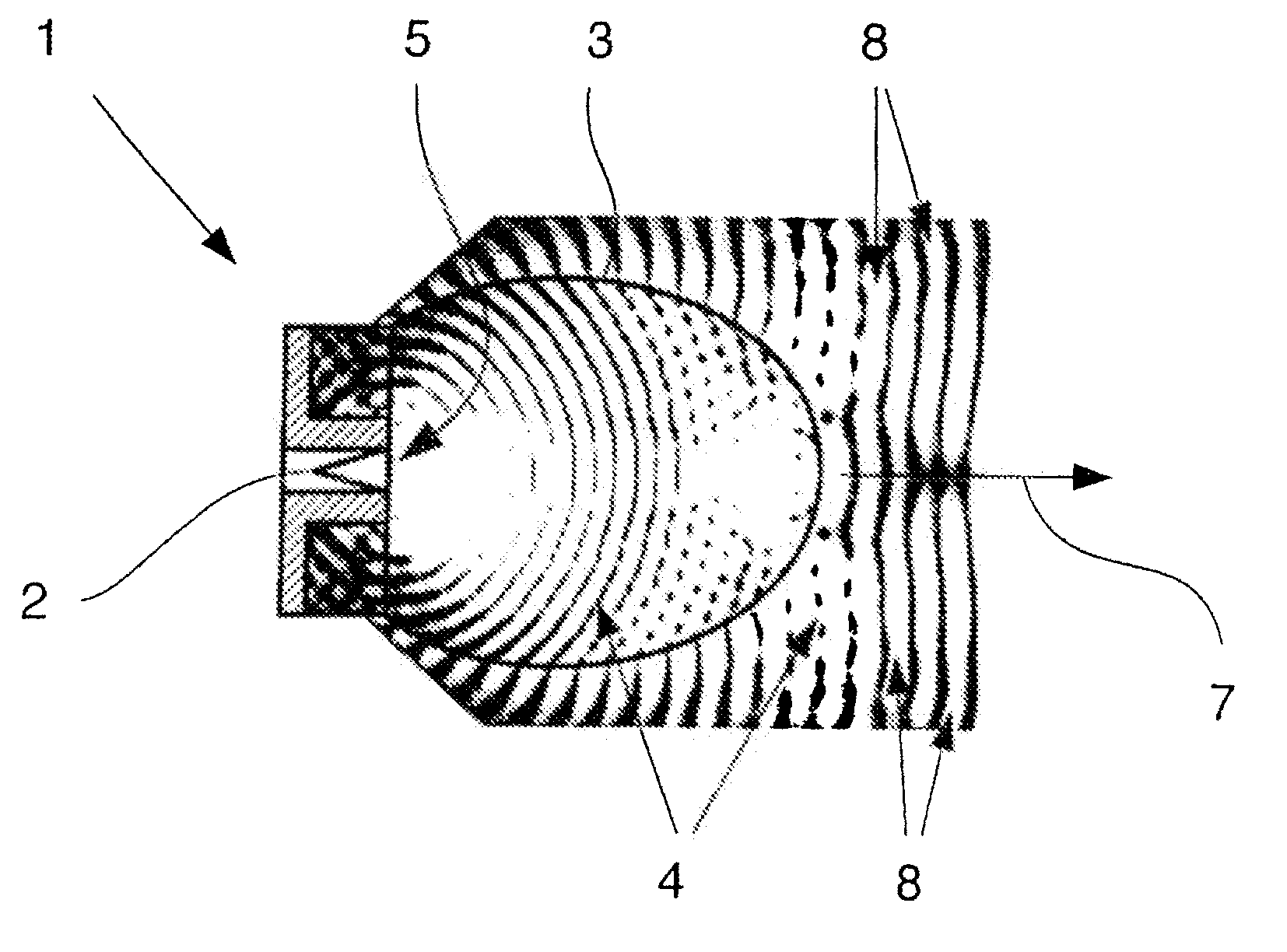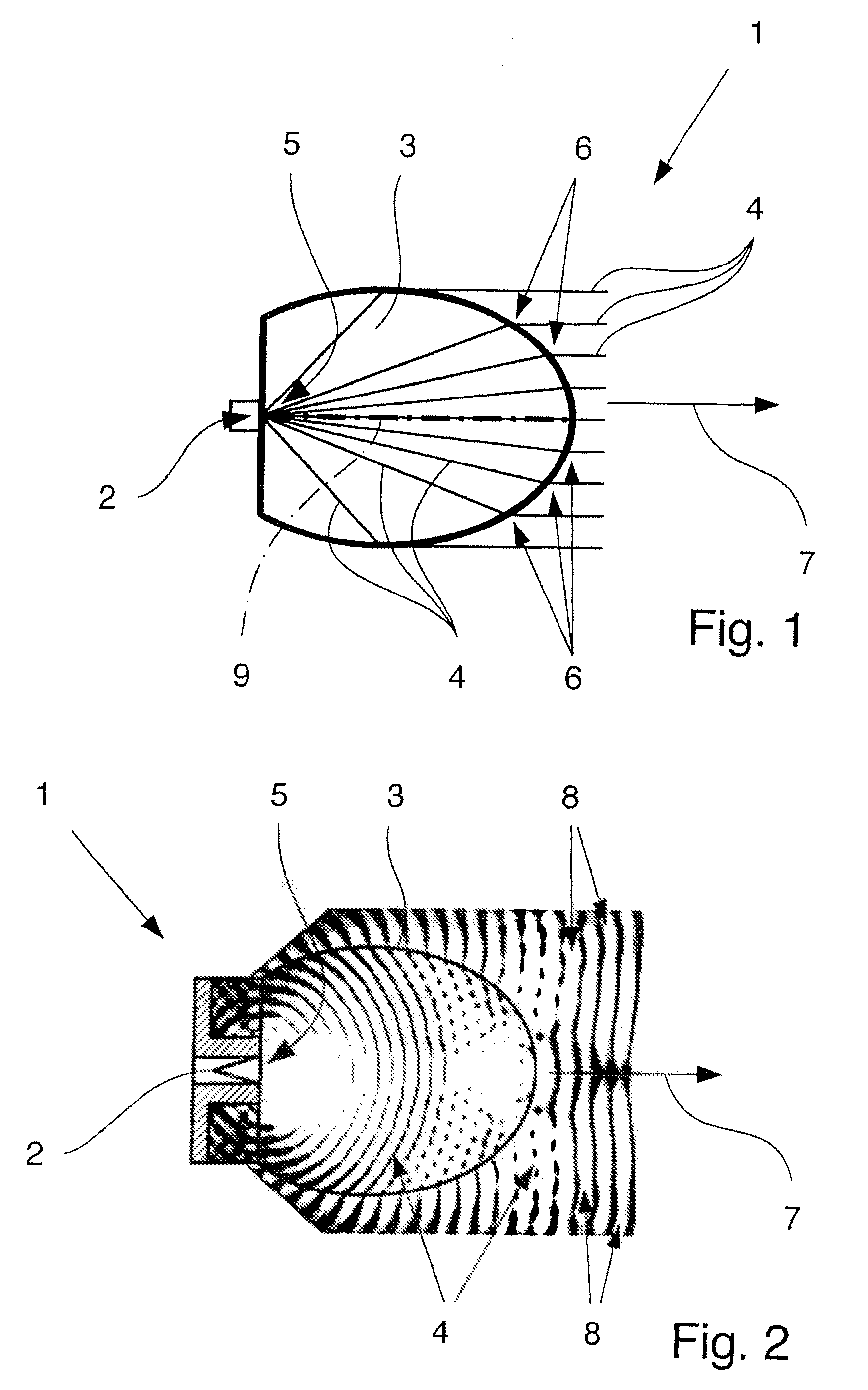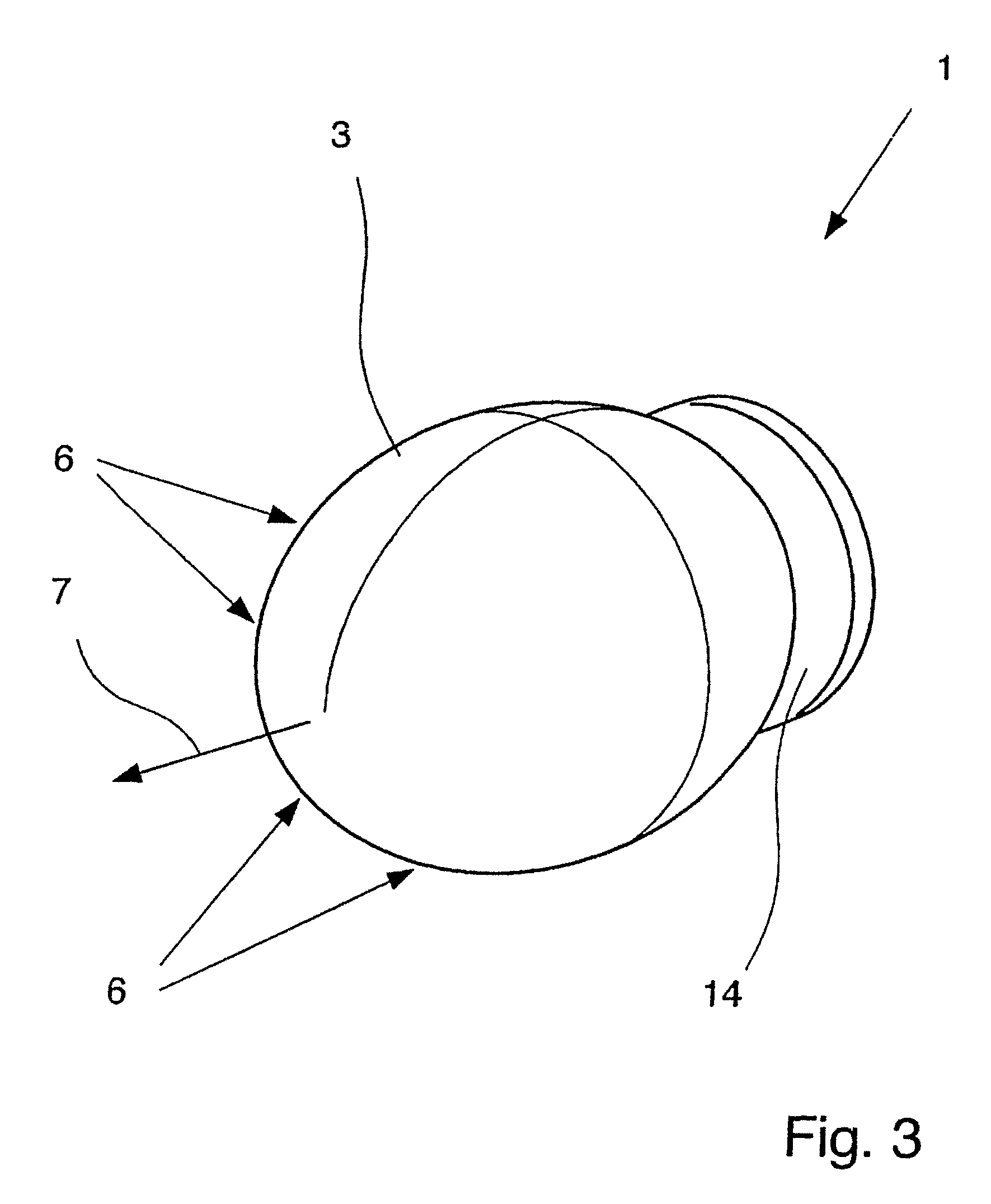Dielectric antenna
- Summary
- Abstract
- Description
- Claims
- Application Information
AI Technical Summary
Benefits of technology
Problems solved by technology
Method used
Image
Examples
Embodiment Construction
[0032]FIGS. 1 to 7 show a dielectric antenna 1 with an electromagnetic feed element 2 and with a lens 3 made of a dielectric material. The manner of operation of the antenna 1 is always based on the feed element 2 emitting electromagnetic radiation 4 and the lens 3 being supplied with electromagnetic radiation 4 in the feed region 5, the lens 3 relaying the electromagnetic radiation 4 and emitting it with the transmission region 6 of the lens.
[0033]In all figures it is shown that the lens 3 is shaped ellipsoidally at least in the transmission region 6 and the lens 3 is arranged relative to the feed element 2 such that the electromagnetic radiation 4 emitted from the lens 3 in the direction of maximum radiation 7 of the antenna 1 has an essentially planar phase front 8, the phase front 8 being explicitly recognizable only in FIG. 2.
[0034]FIG. 1 clearly shows how the electromagnetic radiation 4 which has been emitted from the schematically shown feed element 2 propagates within the le...
PUM
 Login to View More
Login to View More Abstract
Description
Claims
Application Information
 Login to View More
Login to View More - Generate Ideas
- Intellectual Property
- Life Sciences
- Materials
- Tech Scout
- Unparalleled Data Quality
- Higher Quality Content
- 60% Fewer Hallucinations
Browse by: Latest US Patents, China's latest patents, Technical Efficacy Thesaurus, Application Domain, Technology Topic, Popular Technical Reports.
© 2025 PatSnap. All rights reserved.Legal|Privacy policy|Modern Slavery Act Transparency Statement|Sitemap|About US| Contact US: help@patsnap.com



